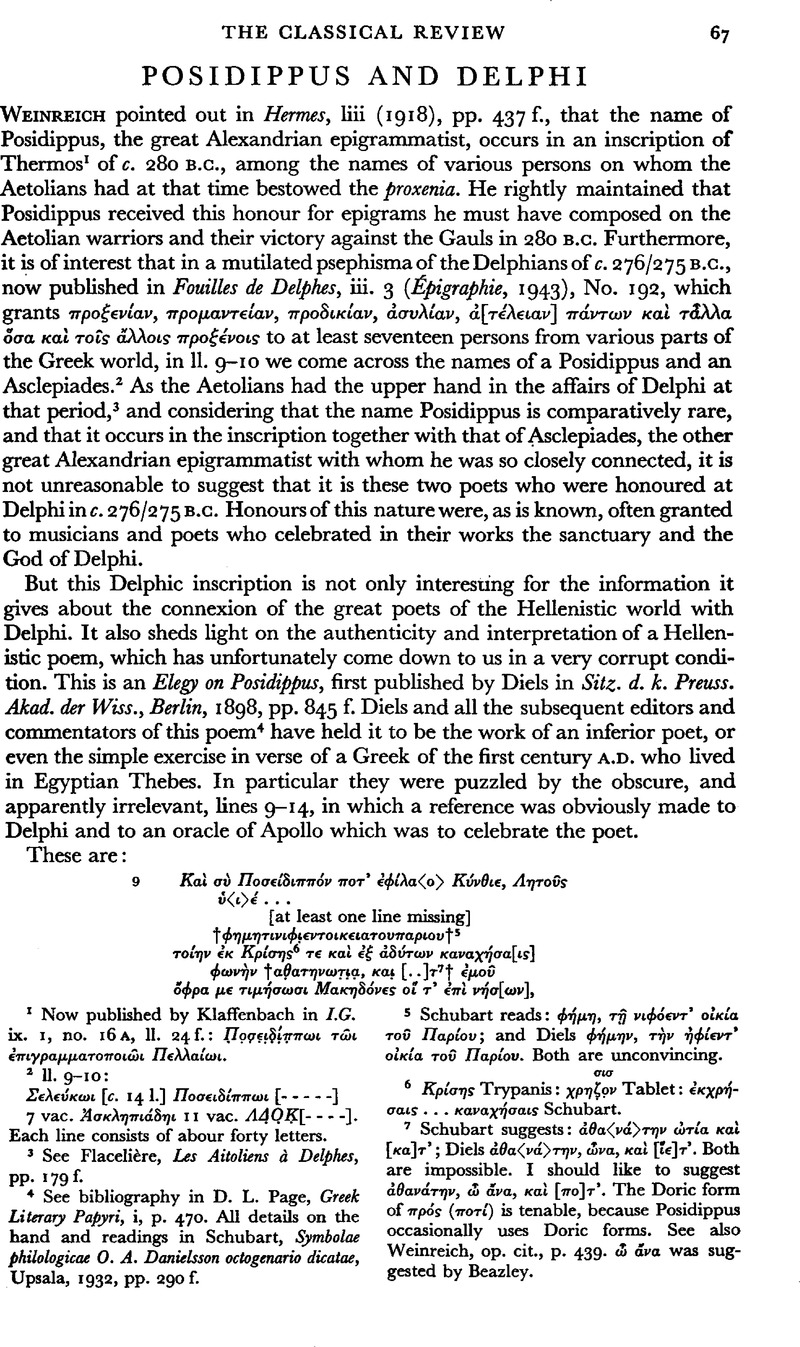Article contents
Posidippus and Delphi
Published online by Cambridge University Press: 13 February 2009
Abstract

Information
- Type
- Review Article
- Information
- Copyright
- Copyright © The Classical Association 1952
References
1 Now published by Klaffenbach in I.G. ix. 1, no. 16 A, ll. 24 f.: ![]() .
.
2 ll. 9–10:
Σελε⋯κωι [c. 14 l.] Ποσειδ⋯ππωι ![]()
7 vac. Ἀσκληπι⋯ππωι 11 vac. ![]() Each line consists of abour forty letters.
Each line consists of abour forty letters.
3 See Flacelière, , Les Aitoliens à Delphes, pp 179f.Google Scholar
4 See bibliography in Page, D. L., Greek Literary Papyri, i, p. 470Google Scholar. All details on the hand and readings in Schubart, , Symbolae philologicae O. A. Danielsson octogenario dicatae, Upsala, 1932, pp. 290 f.Google Scholar
5 Schubart reads: φ⋯μη, τῇ νιφ⋯εντ' οἰκ⋯α το⋯ Παρ⋯ου and Diels φ⋯μην, τ⋯ν ἠφ⋯εντ' οἰκ⋯α το⋯ Παρ⋯ου. Both are unconvincing.
6 Κρ⋯σης Trypanis: ![]() Tablet: ⋯κχρ⋯σαις … καναχ⋯σαις Schubart.
Tablet: ⋯κχρ⋯σαις … καναχ⋯σαις Schubart.
7 Schubart suggests: ![]() ; Diels
; Diels ![]() . Both are impossible. I should like to suggest
. Both are impossible. I should like to suggest ![]() . The Doric form of πρ⋯ς (ποτ⋯) is tenable, because Posidippus occasionally uses Doric forms. See also Weinreich, op. cit., p. 439. ὦ ἄνα was suggested by Beazley.
. The Doric form of πρ⋯ς (ποτ⋯) is tenable, because Posidippus occasionally uses Doric forms. See also Weinreich, op. cit., p. 439. ὦ ἄνα was suggested by Beazley.
- 1
- Cited by

